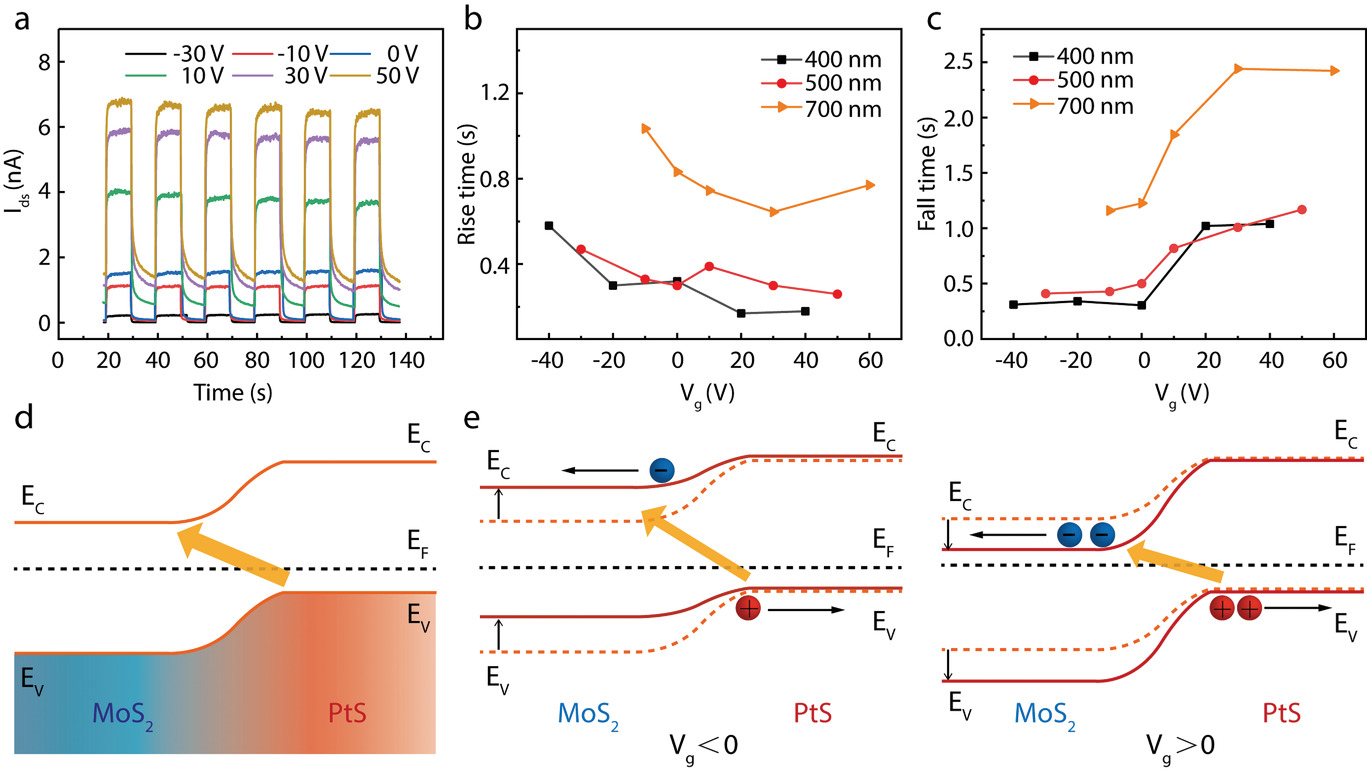Recently, the team of Wang Zegao, a distinguished researcher at SCU, has made new achievements in the controllable preparation of a new 2D transition metal dichalcogenides and the field control of photoelectric detection. This work provides a new idea for the study of external physical field regulation of two-dimensional atomic crystal based photoelectric detection, which is of great significance for infrared detection. The article was published in the journal Advanced Functional Materials titled "Manipulate the Light-Matter Interaction of PtS/MoS2 p–n Junction for High Performance Broadband Photodetection". The first author of this paper is Li Fang, a second-year postgraduate student of school. Wang Zegao is the corresponding author and Sichuan University is the only byline of this paper.

a) Optical microscope image of PtS film on a Si/SiO2 substrate; the inset shows the Raman spectrum of PtS under different growth temperature from 450 to 850 °C. b) The XPS spectra of Pt 4f and S 2p. c) AFM morphology image of PtS; the inset shows the roughness as the function of growth temperature. d) The low magnification TEM image of PtS film. e) The high-resolution TEM image of PtS film. f) The low-pass filtered atomic pattern of PtS film and the inset shows the selected area diffraction pattern.

a) Time-resolved photoresponse of MoS2/PtS heterojunction under 400 nm light illumination at different gate voltage. Graph of the b) rise and c) fall time as a function of gate voltage under different wavelength of 400, 500, and 700 nm. d) Energy band diagram of the MoS2/PtS photodetector under incident light illumination. e) Energy band diagrams of the MoS2/PtS photodetector under negative (Vg < 0 V, left panel) and positive (Vg > 0 V, right panel) back gate voltages.
Due to the limited carrier concentration, 2D transition metal dichalcogenides have lower intrinsic dark current, and thus, are widely studied for high performance room photodetection. However, the light-matter interaction is still unclear, thus tuning the photoexcitation and further manipulating the photodetection is a challenge. Herein, large-area PtS films are synthesized, and the growth mechanism is investigated. It is demonstrated that PtS has an orthorhombic structure and exhibits the p-type semiconducting behavior. Then, MoS2/PtS p–n heterojunction is fabricated, and its energy diagram is discussed based on the Kelvin probe force microscopy. The contact potential difference is about 160 mV, which is much larger than previous 2D junctions facilitating the charge separation. Furthermore, the phototransistor based on MoS2/PtS p–n heterojunction is prepared, showing broadband photoresponse from visible to near-infrared. The manipulation of an external field on photoresponse, detectivity, and rise/fall time are explored and discussed. The responsivity can reach up to 25.43 A W−1, and the detectivity is 8.54×1012 Jones. These results indicate that PtS film is a prospective candidate for high-performance optoelectronic devices and broaden the scope of infrared detection materials. (abstract)
The above research work was supported by the National Natural Science Foundation of China and the Key Program of Applied Basic Research of Sichuan Provincial Science and Technology Department.
The original link: https://doi.org/10.1002/adfm.202104367
